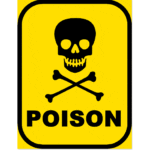In 2007, Mississippi attorney John Arthur Eaves on behalf of more than 7,000 residents of the picturesque, yet heavily polluted, Puerto Rican island of Vieques, filed a law suit against the U.S. government. From 1941 until 2003 the U.S. Navy operated a base there, conducting bombing runs and testing chemical weapons for use in foreign wars, from Vietnam to Yugoslavia to Iraq.
 The three-quarters of Vieques’ population listed as plaintiffs in the suit blame the billions of tons of bombs dropped by the Navy on Vieques’ eastern half, and the toxic chemicals released into the water, air and soil during that period, for their physical and psychological illnesses. Viequenses today suffer 30-percent higher cancer rates than other Puerto Ricans, 381-percent higher rates of hypertension, 95-percent higher rates of cirrhosis of the liver and 41-percent higher rates of diabetes. Twenty-five percent more children die during infancy in Vieques than in the rest of Puerto Rico.
The three-quarters of Vieques’ population listed as plaintiffs in the suit blame the billions of tons of bombs dropped by the Navy on Vieques’ eastern half, and the toxic chemicals released into the water, air and soil during that period, for their physical and psychological illnesses. Viequenses today suffer 30-percent higher cancer rates than other Puerto Ricans, 381-percent higher rates of hypertension, 95-percent higher rates of cirrhosis of the liver and 41-percent higher rates of diabetes. Twenty-five percent more children die during infancy in Vieques than in the rest of Puerto Rico.
Early in World War II, when fortunes looked grim for the Allies, the U.S. Navy occupied three-quarters of Vieques, which sits eight miles from the Puerto Rican mainland, moved one-third of its population to the nearby Virgin Islands, and planned to relocate the entire British fleet there in the event of a German invasion of England. Instead, Vieques became the U.S. testing ground for nearly every weapon used during the Cold War.
Washington rejects allegations that the Navy’s activities on Vieques poisoned residents — even though the government has admitted the presence of napalm, agent orange, depleted uranium, white phosphorous, arsenic, mercury, lead and cadmium on the former bombing range. In February 2005, the EPA identified Vieques as a Superfund site, which placed the cleanup of hazardous sites in federal hands.
Under President Barack Obama, however, the U.S. government has shown signs of changing its tune. A U.S. congressional investigation last May into Hurricane Katrina trailers contaminated with formaldehyde accused the ATSDR of colluding with the Federal Emergency Management Agency (FEMA) to “deny, delay, minimize, trivialize or ignore legitimate health concerns.” When the Vieques case resurfaced, a team of ATSDR scientists began re-examining environmental health data on the island.
On Feb. 12, 2008, during his heated primary campaign against Hillary Clinton, then Sen. Obama wrote a letter to Puerto Rican Governor Acevedo Vila, stating that, were he to be elected president, “My Administration will actively work with the Department of Defense as well to achieve an environmentally acceptable clean-up … We will closely monitor the health of the people of Vieques and promote appropriate remedies to health conditions caused by military activities conducted by the U.S. Navy on Vieques.” Yet today, the Obama White House remains silent on the issue.


